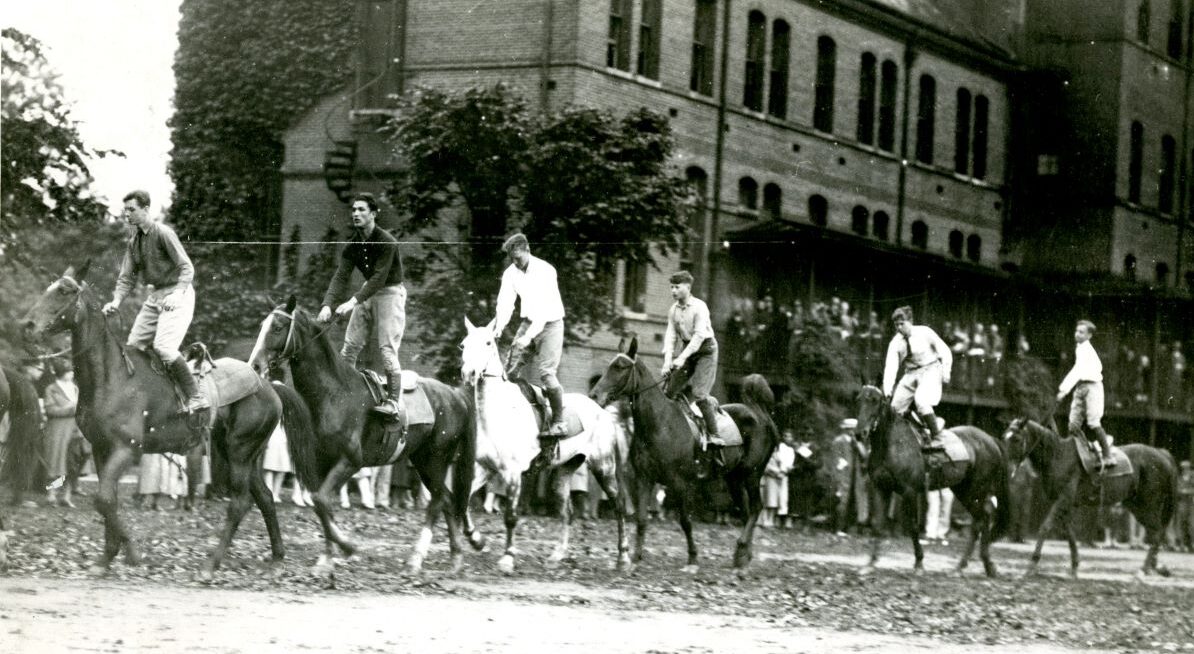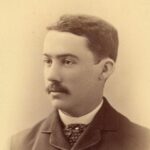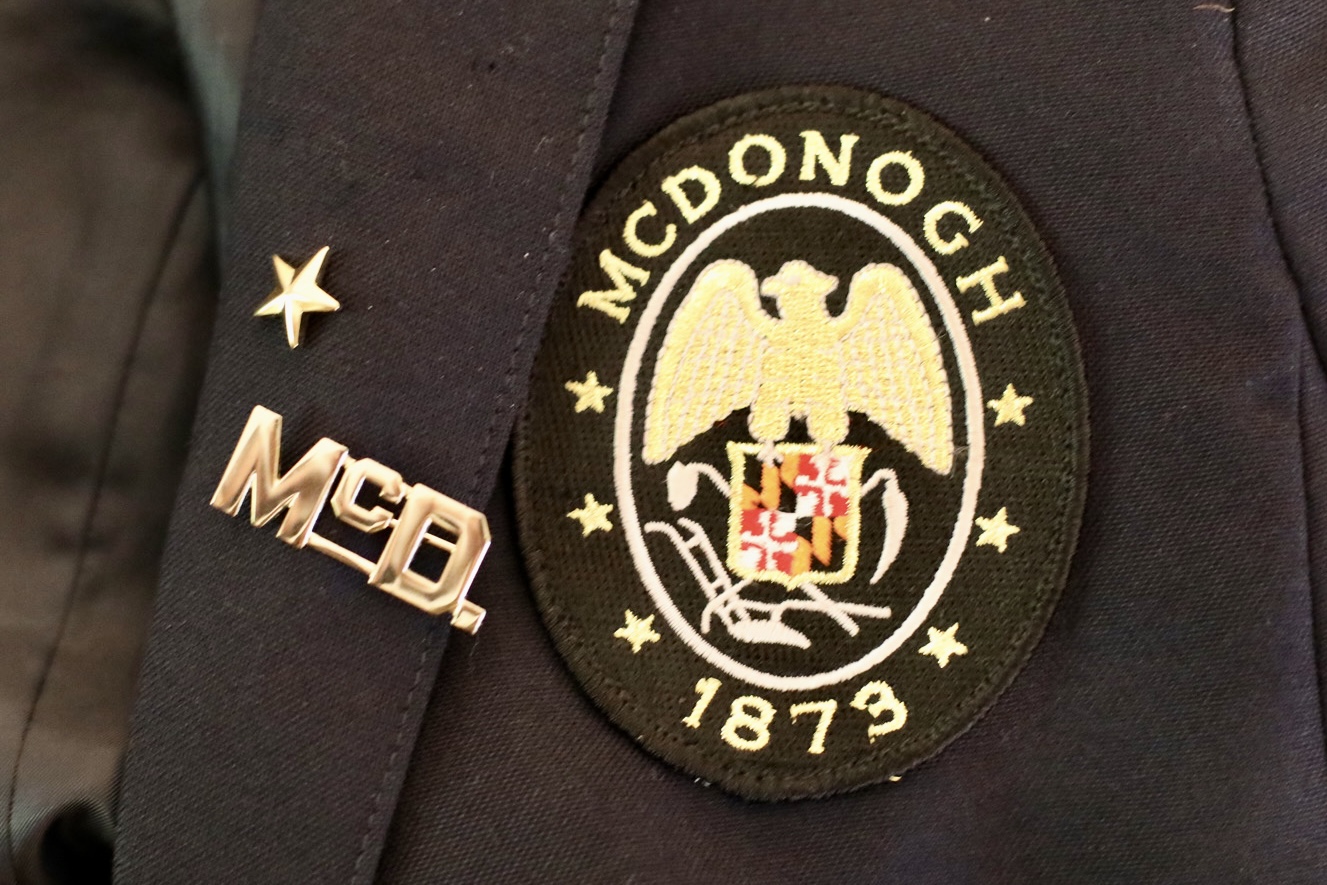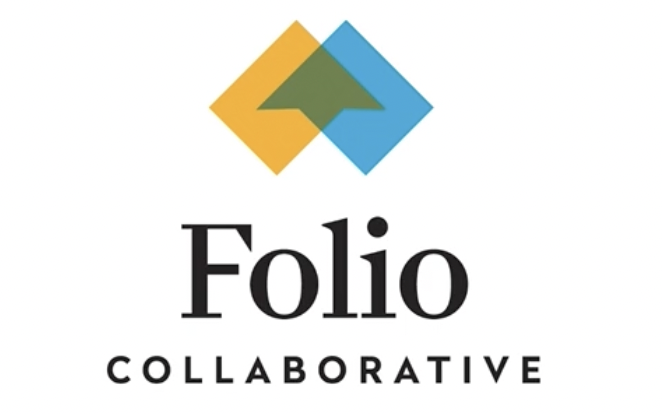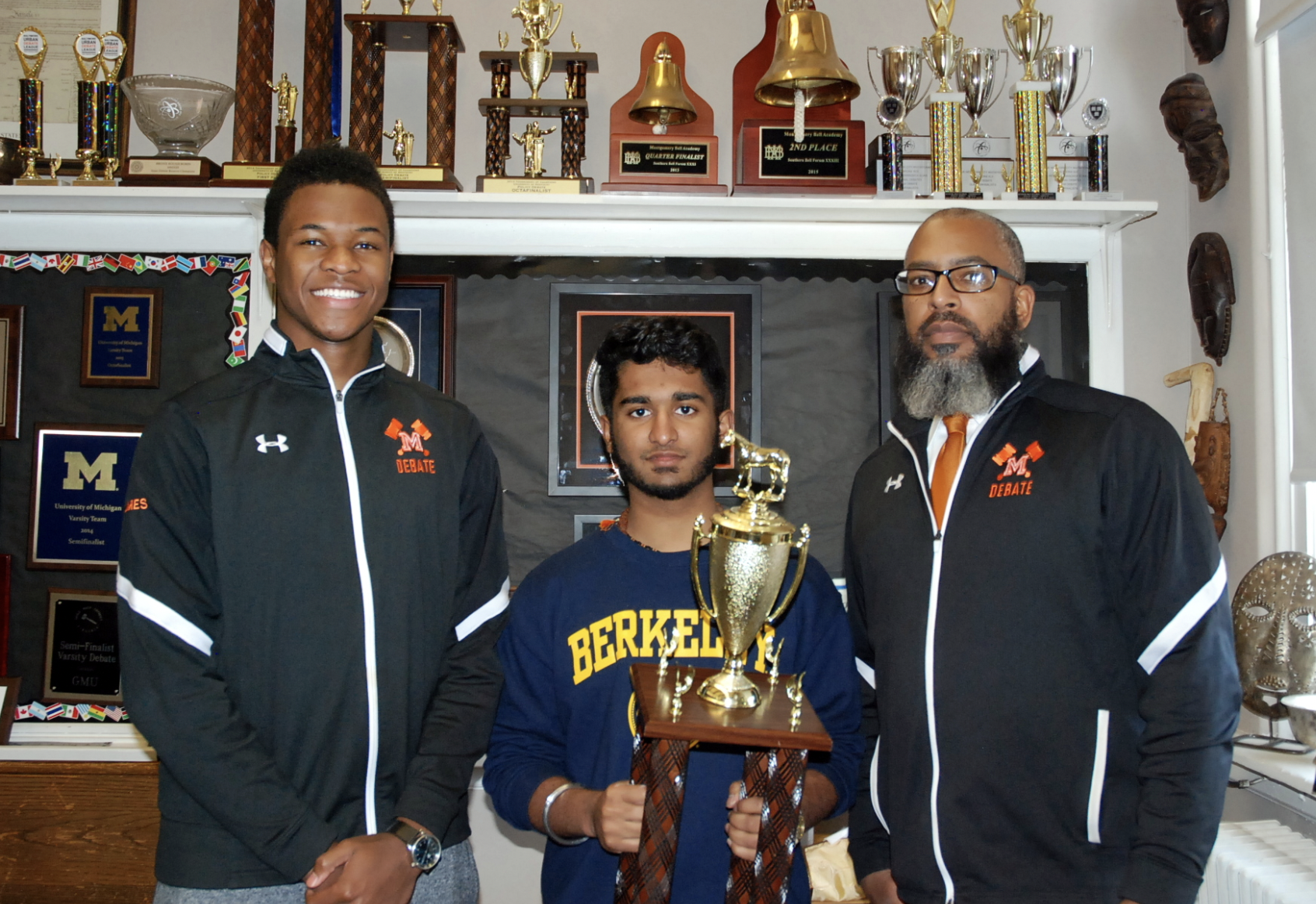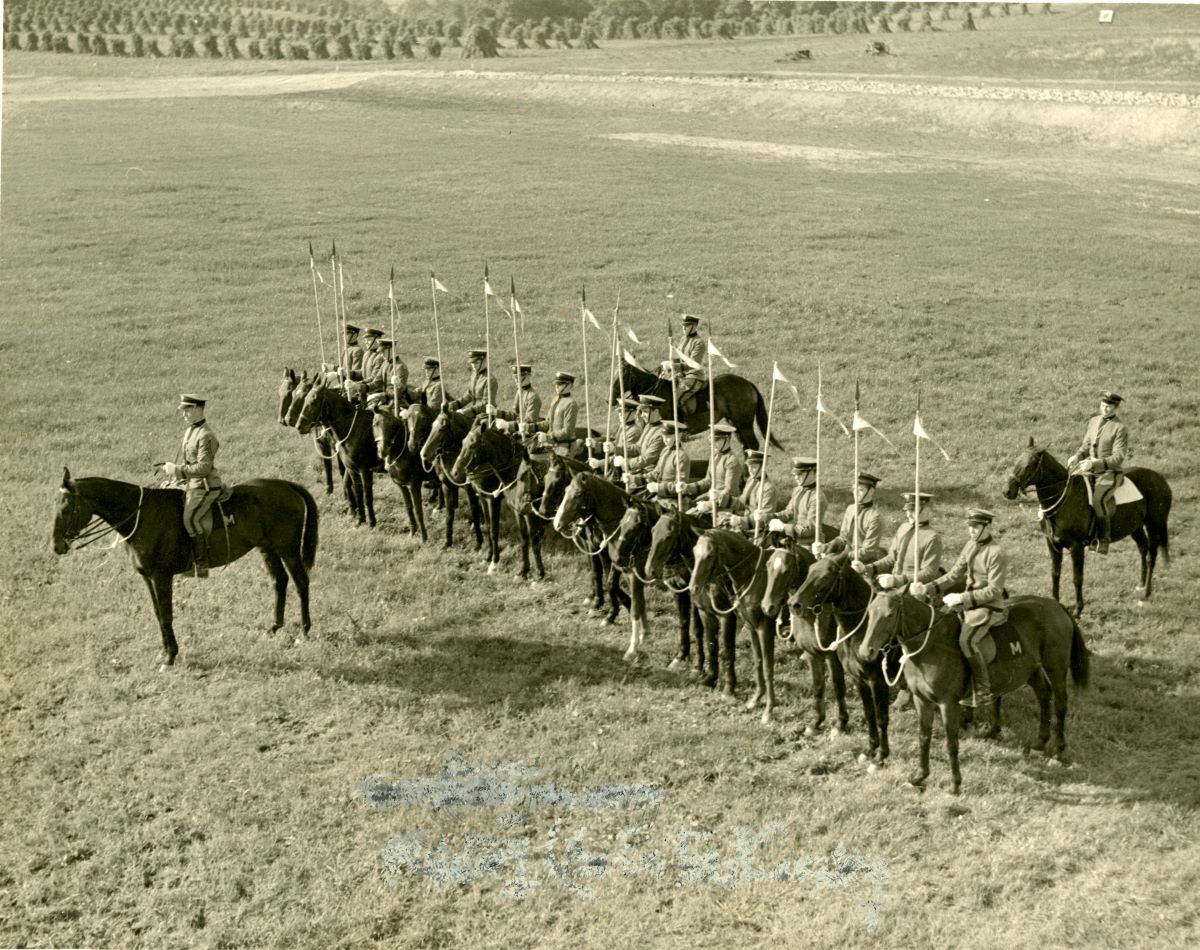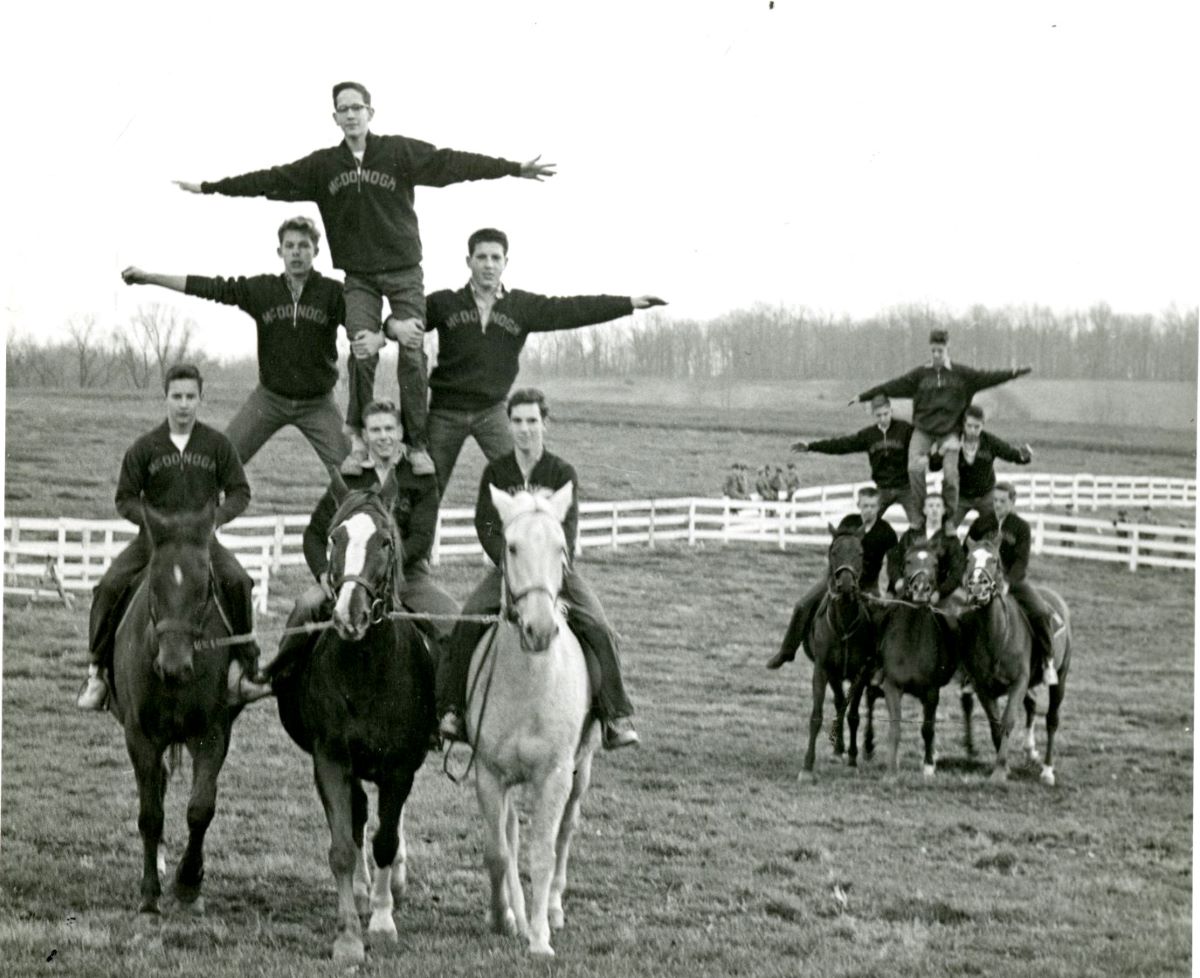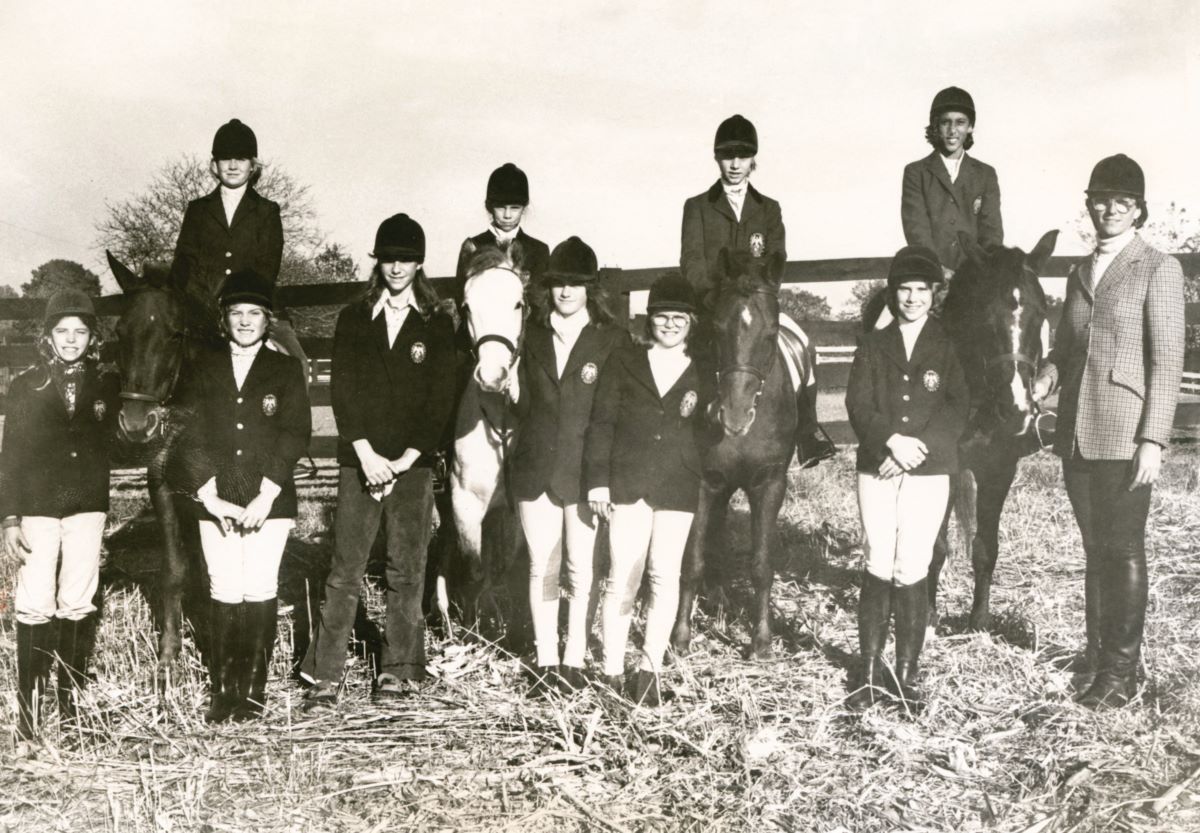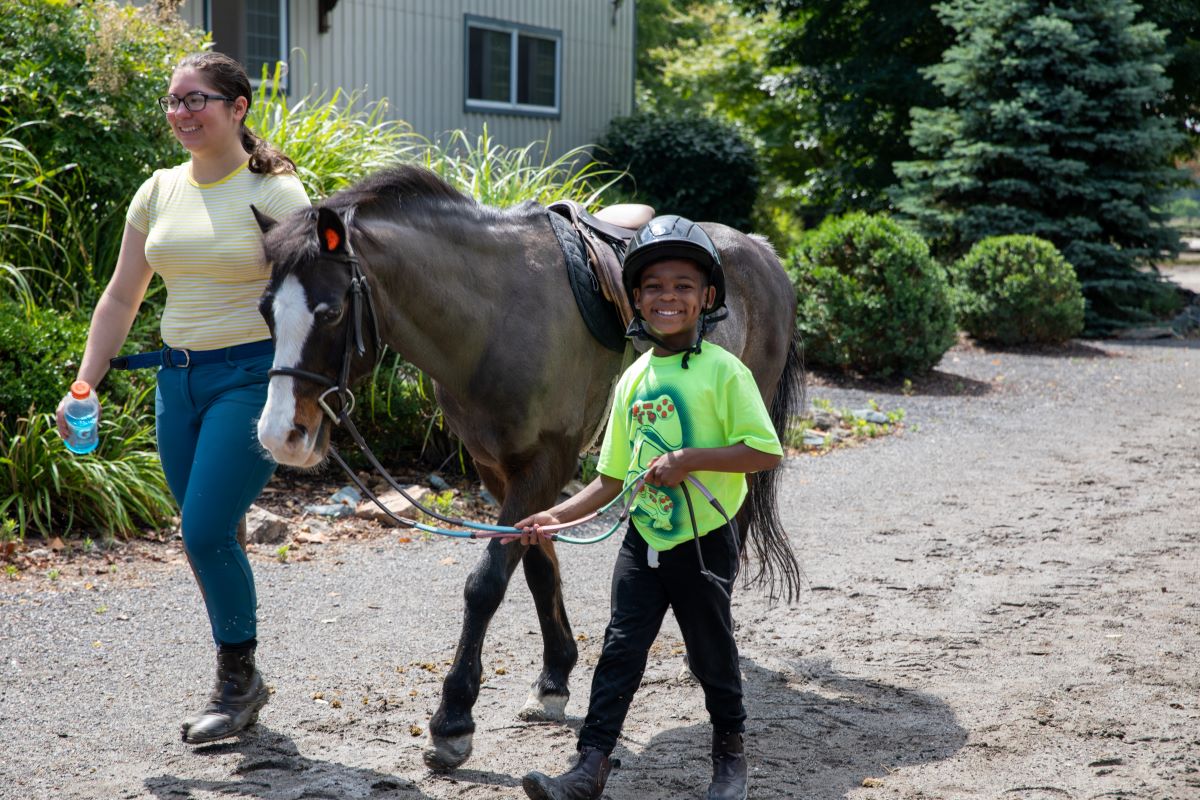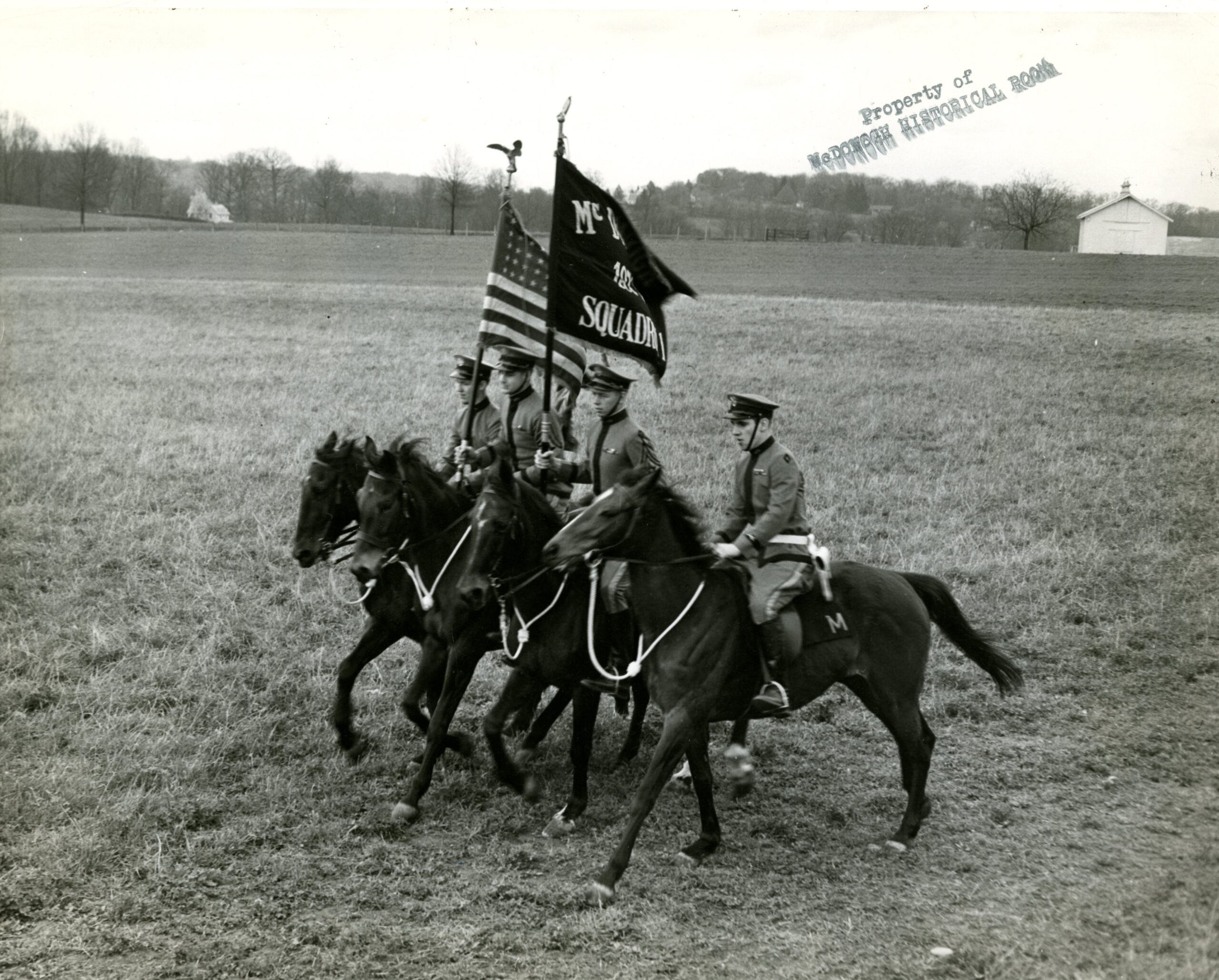Almost immediately after Louis E. “Doc” Lamborn began his tenure as the seventh head of McDonogh School in January 1926, horsemanship and riding became part of the program. The riding program attracted boys from the “Valley” whose families participated in steeple chases and horse shows, as well as those who never dreamed of riding a horse.
McDonogh’s herd of horses began with four draft horses and two mules. After his arrival, Doc Lamborn loaned the school riding horses from his summer camp and purchased 28 wild horses from a livery stable in Baltimore. During the Depression, some parents bartered horses for tuition fees. The herd also grew by mating stallions and mares. Former Headmaster Bob Lamborn recalled that the boys, who were always responsible for feeding and grooming the horses, “hacked” around campus, participated in steeple chasing and fox hunting, and rode their horses to shows as far away as Towson and Timonium.
The cavalry troop was established by Doc as part of McDonogh’s semi-military program, and by 1939, there were two Upper School and one Middle School platoons. The high point of the year was the annual Competitive Drill (a riding exhibition that included an inspection of each trooper and a series of intricate compulsory maneuvers) between the platoons for the coveted Elderkin Cup, which was awarded at Commencement. The Competitive Drill (see story No. 115) continued during the war years and beyond despite a decrease in the number of equestrians and the elimination of stunt-riding. The cavalry troops maintained high standards of efficiency, and their enthusiasm and camaraderie continued until the unit disbanded when McDonogh transitioned from semi-military to civilian status in 1971.
McDonogh’s Equestrian program remains an integral part of the school today. Beginning in prefirst, children are not only exposed to the basics of horse care, but they also take their first rides on McDonogh’s ponies during a unit in PE. In seventh grade, students who develop a passion for the sport may join the Middle School equestrian team, and in Upper School, they may become part of the varsity and junior varsity teams.
